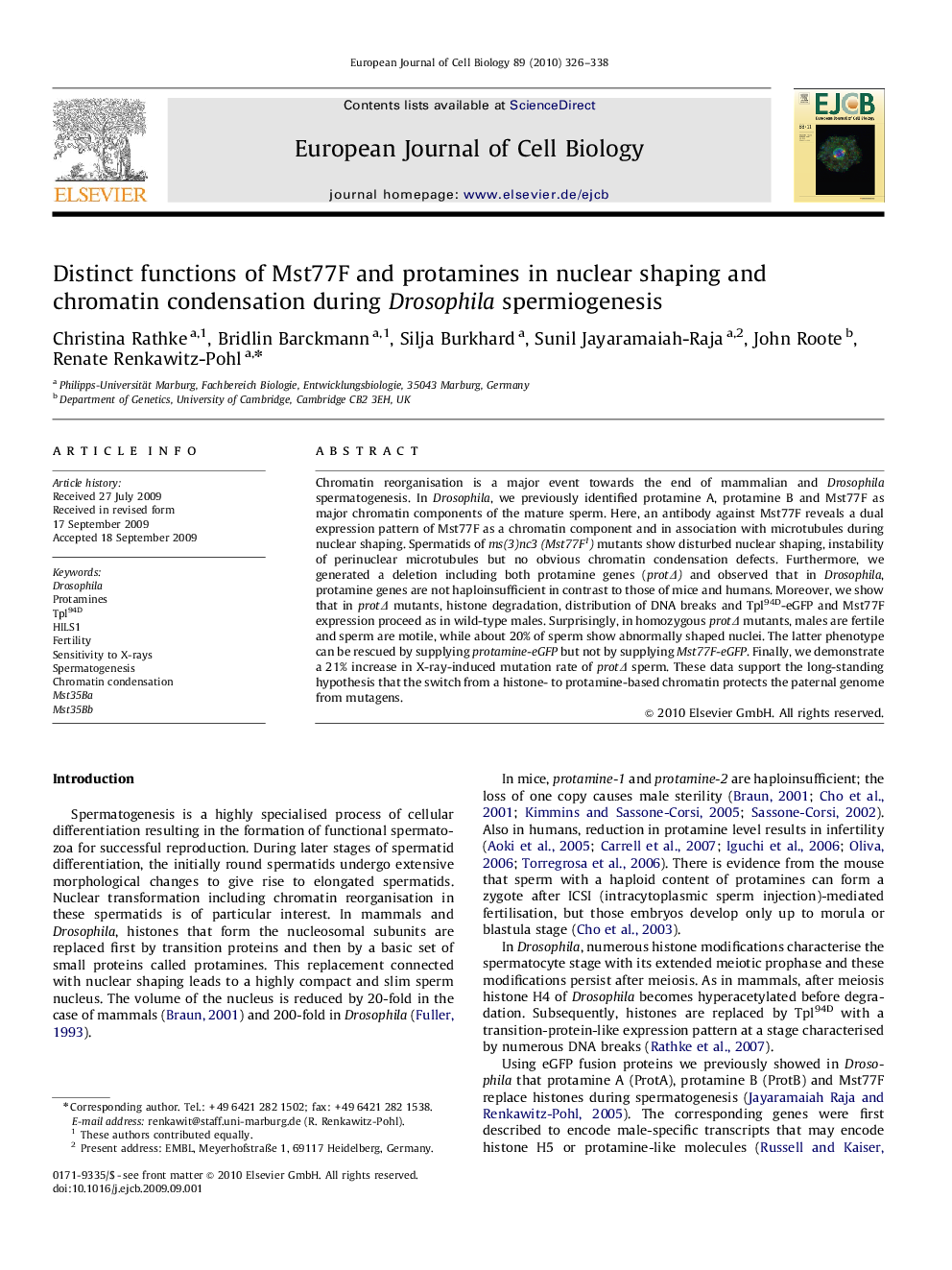| Article ID | Journal | Published Year | Pages | File Type |
|---|---|---|---|---|
| 2178798 | European Journal of Cell Biology | 2010 | 13 Pages |
Chromatin reorganisation is a major event towards the end of mammalian and Drosophila spermatogenesis. In Drosophila, we previously identified protamine A, protamine B and Mst77F as major chromatin components of the mature sperm. Here, an antibody against Mst77F reveals a dual expression pattern of Mst77F as a chromatin component and in association with microtubules during nuclear shaping. Spermatids of ms(3)nc3 (Mst77F1) mutants show disturbed nuclear shaping, instability of perinuclear microtubules but no obvious chromatin condensation defects. Furthermore, we generated a deletion including both protamine genes (protΔ) and observed that in Drosophila, protamine genes are not haploinsufficient in contrast to those of mice and humans. Moreover, we show that in protΔ mutants, histone degradation, distribution of DNA breaks and Tpl94D-eGFP and Mst77F expression proceed as in wild-type males. Surprisingly, in homozygous protΔ mutants, males are fertile and sperm are motile, while about 20% of sperm show abnormally shaped nuclei. The latter phenotype can be rescued by supplying protamine-eGFP but not by supplying Mst77F-eGFP. Finally, we demonstrate a 21% increase in X-ray-induced mutation rate of protΔ sperm. These data support the long-standing hypothesis that the switch from a histone- to protamine-based chromatin protects the paternal genome from mutagens.
